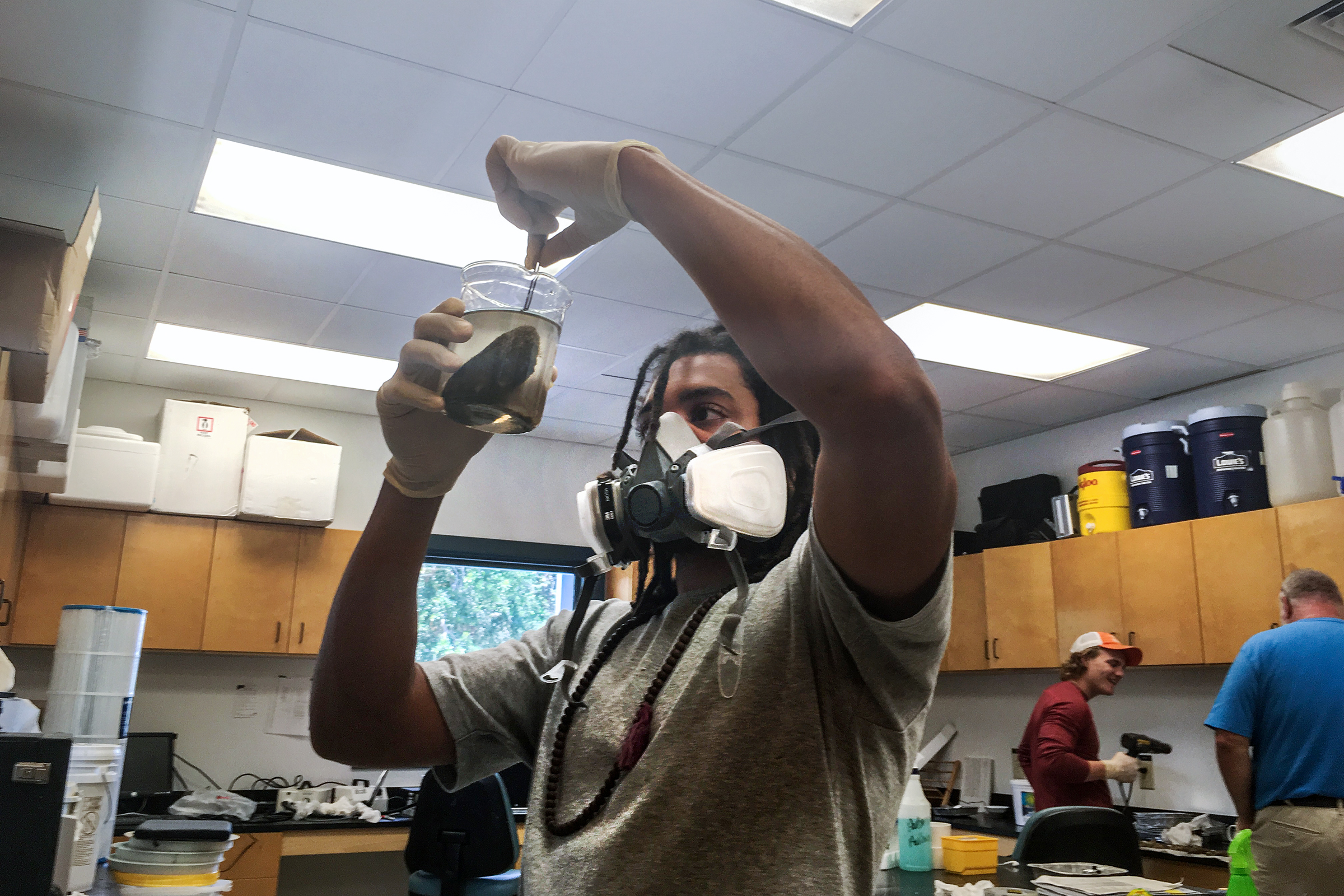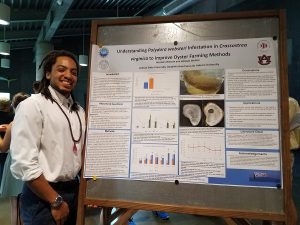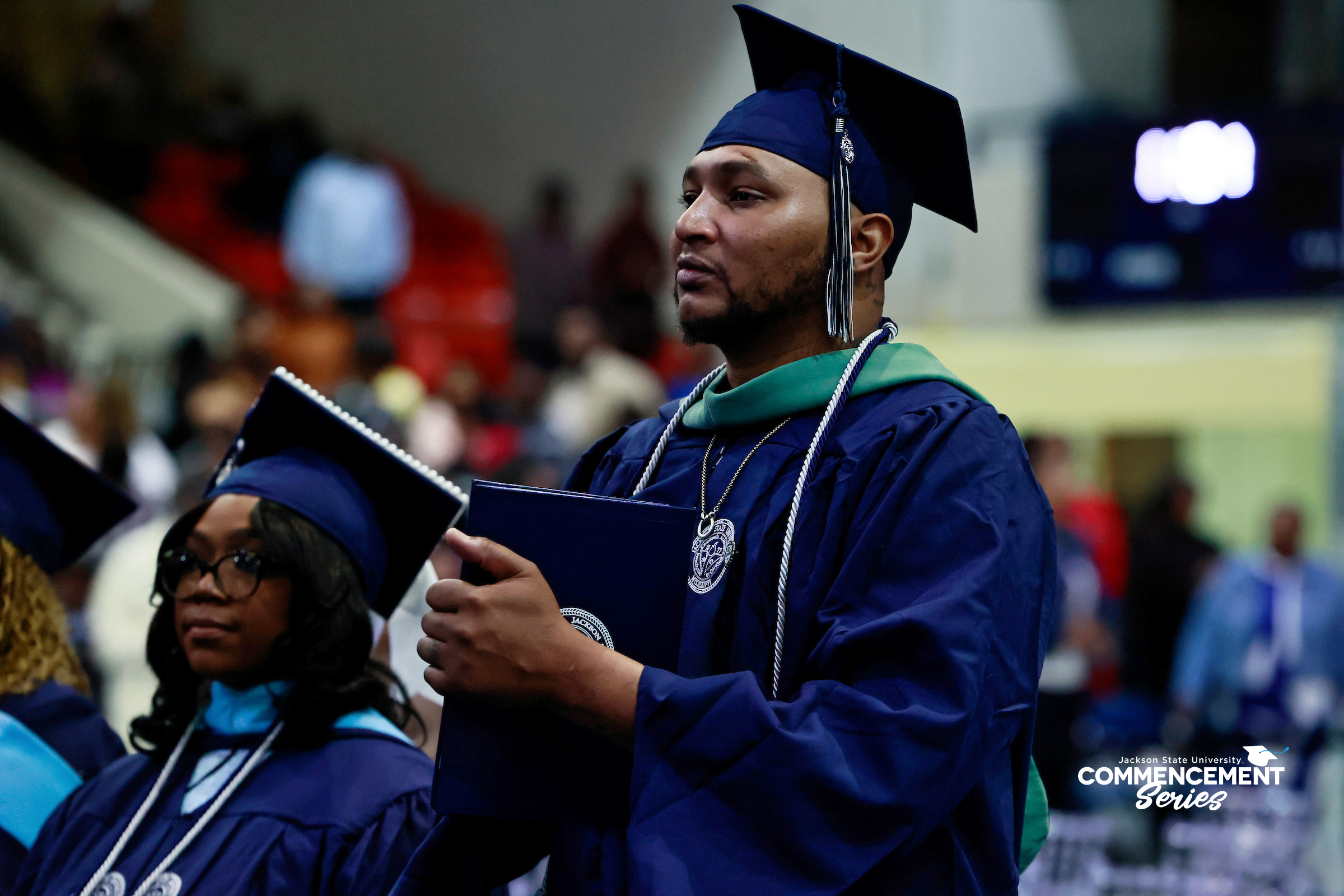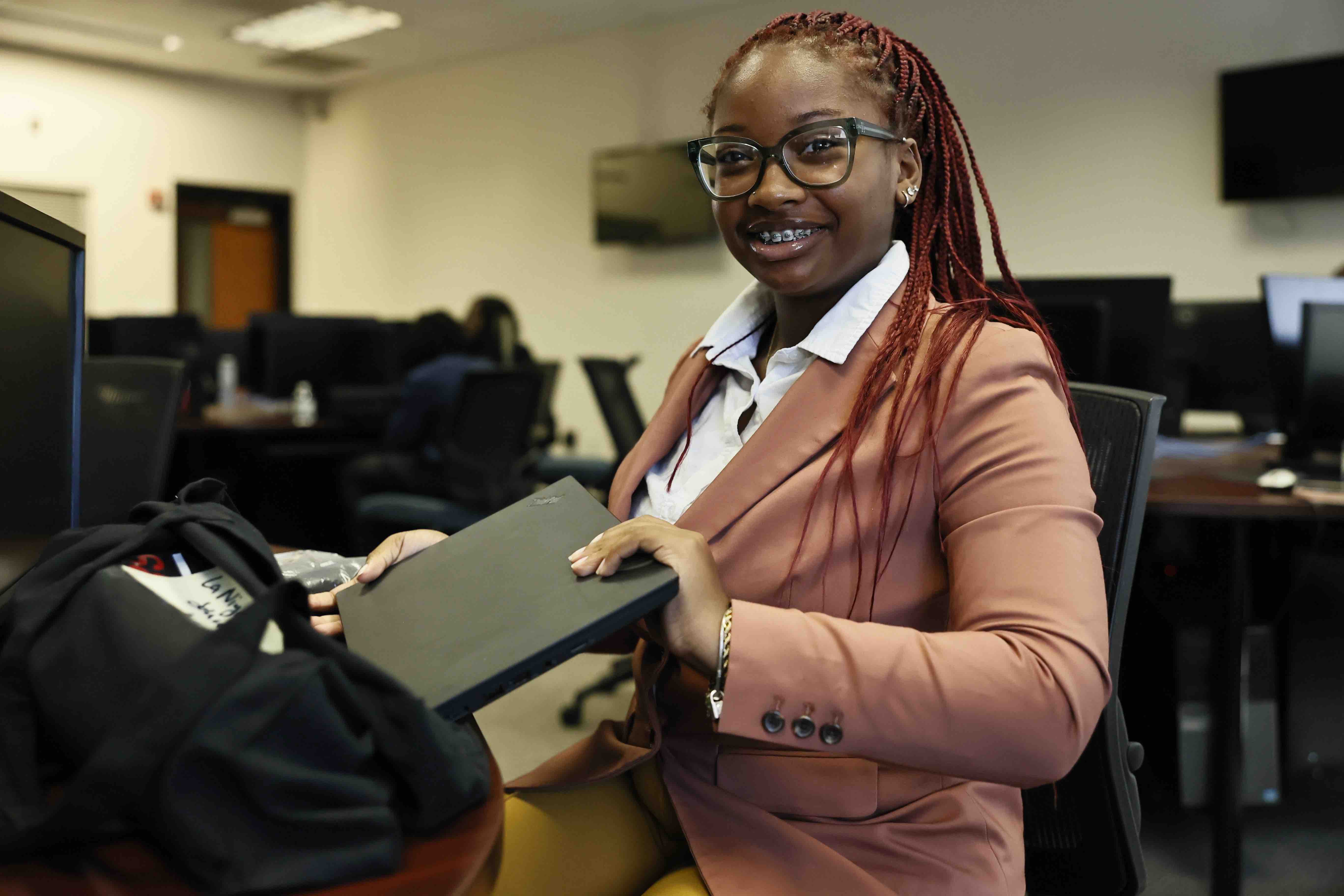
Jackson State University biology student Harrison Watson was one of five undergraduates to participate in the 2017 research experience for undergraduates this past summer at the Dauphin Island Sea Lab. The program sponsored by the National Science Foundation is an opportunity for students to take classroom knowledge of their research process and apply it to their scientific interests.
For many of these students, it’s their first chance to experience the research process from beginning to end.
“I have participated in several activities, both in the field and in the lab, that has directly attributed to a better understanding of the scientific method that I was looking forward to by joining the program,” said Watson, a junior and Alabama native.
The 2017 REUs selected were Harrison Watson, Jackson State University; Rachel Pugh, Mississippi Gulf Coast Community College; Jenny Rhee, University of Louisiana, Lafayette: Marnie Tabor, Athens State University and Hanae Togami, Haverford College.
[dropcap]E[/dropcap]ach REU was paired with a faculty member to mentor them during the 10-week program. This year’s faculty participants were Dr. Ruth Carmichael (Togami), Dr. Bill Walton (Pugh and Watson), Dr. Kelly Dorgan (Pugh), Dr. Brian Dzwonkowski (Rhee), Dr. Jeffrey Krause (Rhee and Tabor), and Dr. Just Cebrian (Tabor).

Students engaged in the REU program have an opportunity to customize their experience based on their unique research interests.
“For me, it’s great to see undergraduates come in and get into the mix of research and all the demands of a field season,” Dr. Bill Walton, who serves as a DISL faculty mentor to the REUs, said. “I also love seeing the point where a student starts to make the project his or her own.”
Watson, who worked with Walton at the Auburn Shellfish Lab, wanted his research to fill a gap left by 2016 REU Charlotte Shade’s research. Shade looked to find a way for oyster farmers to avoid mud worms infesting the shells of the oysters they are growing. She found that treating the oysters with a quick brine dip would get rid of the worms, and by raising the oysters in the intertidal (the area of a seashore that is covered at high tide and uncovered at low tide) then significant reinfestation would be prevented.
The question Watson hoped to answer with his research was how long it takes for the oysters to recover and patch up their shells after the brine dip. However, due to the amount of rainfall over the summer salinity levels were not beneficial to the oysters’ livelihood rendering Watson’s research inconclusive. Nonetheless, Watson was able to confirm the previous methods established by Shade and also said the experience gave him a better understanding of applied research.
“I was able to receive insight on how to improve the structuring of my research projects outside of the classroom environment.” He said, “Dealing with the oyster farmers and aqua culture community of the Gulf Coast, I gained an idea of the role environmental scientists play in our society.”
Watson is looking to have his research published in a scientific journal within the year and said that he would recommend this experience to all marine science and environmental science biology concentration majors and plans.
To learn more about the REU program at the Dauphin Island Sea Lab, visit disl.org/univ-prog/nsf-reu.






